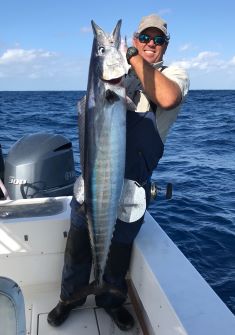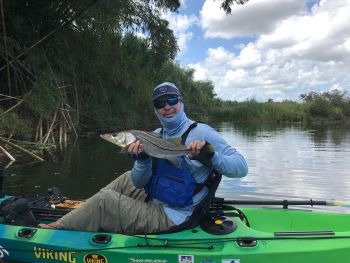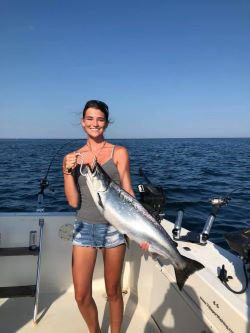Cabin Fever saddled with a diminished bank account doesn’t have to mean travel fishing is off the table. There are destinations that are relatively inexpensive, especially if you are willing to do a little research and practice a bit of DIY fishing. The following handful of locations are among some of the best fishing at the best cost I have experienced.
First, there are general rules for keeping your travel costs down. Plan in advance, and not just dates and locations. Price shop airfare and lodging through the many free online options such as Expedia and skip the travel agent. Research fishing options so you pack the correct tackle and gear (if you DIY your trip, purchasing tackle in some countries is more expensive than bringing it). Pack snacks, bug spray, personal items like toothpaste. Finally, gather a crew – hotels and car rentals become a lot more palatable when you can split the bill 2 or 3 ways.
It is worth mentioning that local costs change abroad rather quickly, as can airfare, so flexibility in planning is a must. Case in point: Trinidad & Tobago was initially on my list, but a recent surge in airfare forced me to remove it from the list. It can be cheap once you get there, but a $700 plane ticket (or way more recently) will run me off every time.
With that in mind, here are five destinations – mostly in our tropics- that still offer great fishing at an excellent value.
Eleuthera, Bahamas
Eleuthera is a favorite Bahamas destination of mine for the true ‘out island’ experience that gives you a taste of that remote, unique Bahamas feel. Plus, there are great DIY fishing opportunities here.
Airfare can average around $250 round trip (plus taxes/fees, which will run a bit over $100), which isn’t too far from islands you’d think should be a lot cheaper (Freeport/West End, Bimini). A quick search found lodging at less than $150/night. Here, a car rental is a better option than taxi for two reasons. One is cost – taxis are not cheap. A single ride can cost almost as much as a two-day rental.
The other reason for a rental is the freedom to cover ground and explore fishing spots. The waters around this island are clean as can be, with many fishable and accessible flats on both the east and west side of the long, skinny island.
 Bring a snorkel and mask along to squeeze every bit of value out of this trip. Any natural structure along the eastern shore will be loaded with mind blowing sights, just be aware of currents and don’t push your luck if the seas are up at all.
Bring a snorkel and mask along to squeeze every bit of value out of this trip. Any natural structure along the eastern shore will be loaded with mind blowing sights, just be aware of currents and don’t push your luck if the seas are up at all.
Bonefish get all the press here, but if you are interested in something a little different swing into a ‘carry away’ stand (small roadside restaurants that sell take-out only) and ask for conch or goat scraps to use for bait. Snappers and groupers will get in on that action, especially on the east side of the island.
Modest upgrade: Take the ferry north to Spanish Wells and hit up The Shipyard, a restaurant on the eastern tip of the island. A local friend Tweedie said, “You can go right off the shore there, and on the flat there are literally hundreds of bonefish. Plan it at the low incoming tide, and when the fish come up over the flats it is a beautiful sight. There are many, many opportunities.”
Big Splurge: Hit up FishingwithDeek.com for a memorable day of offshore fishing. Tuna, mahi, wahoo, billfish, bottom fish – the list goes on. No deepwater charters in the Bahamas are cheap – partially due to the high cost of fuel – but if there not many other places I’d be happy to spend the money, especially if I am able to shave other expenses.
San Juan, Puerto Rico
Puerto Rico is your most budget friendly tropical destination that doesn’t require a passport. The island is rife with inshore, offshore and freshwater species that can entertain any style of angler.
A well-planned trip can find flights as low as $110 round trip, with hotels or Airbnb under the $100 mark. Uber is available and much cheaper than a taxi here (keep an eye on ‘peak hours’ price changes), but car rentals are modest as well and therefore your best overall bet.
modest as well and therefore your best overall bet.
Fishing Puerto Rico’s estuaries and river mouths will have a familiar feel for Floridians as far as the species go. What will feel different is the scenery. Catching tarpon and snook from a kayak or wading with mountains over your back shoulder will feel surreal at first.
You could drive the entire coast of Puerto Rico in about eight hours, so why not? There are bays, lagoons and river mouths all along the coast. Shore fishing is popular right in the San Juan area, and Arecibo is a popular spot. Pack a lunch and a wad of snacks, plan a few coastal spots to explore and hit the road. Kayak rentals are available along the coast and generally run about $60/person.
Freshwater fishing in Puerto Rico is underrated. Largemouth bass are plentiful, as are peacocks, cichlids and white bass.
If you are interested in learning about marine conservation in Puerto Rico or just want a friendly local to share fishing stories, contact Isreal Umpierre at pescaplayaambiente@hotmail.com – he’s a wealth of local knowledge and great angler.
Modest upgrade: Look into a guided nighttime kayak tour in one of the three bioluminescent estuaries on the island. Fishing isn’t EVERYTHING (so I am told), and this is a worthwhile experience for anyone, including a spouse or family member who doesn’t fish.
Big splurge: Rent a small boat to explore the islands and bays along the coast. However, if you are thinking about renting a bigger boat to access the fantastic offshore fishing, you might as well hire a guide for the day – larger boats are not cheap.
Freeport, Bahamas
Flights to Freeport can be tricky. Check prices from every airport withing reasonable driving range, from Daytona to Miami. With lead time you should be able to find flights around $200 round trip, but $250 (plus taxes and fees) might be more realistic. Coordinate your lodging with your mode of travel – if you find an inexpensive place within walking distance to fishing flats, you might do better with an uber (recently added in Freeport) or a taxi. On the other hand, if you will be driving to different destinations (recommended), stick with a rental car, which can average around $70/day.
Traveling on a budget shouldn’t always equate to selecting the very cheapest option. Rather, if you think of it as getting the most value for your dollar, you are likely to have a more rewarding experience. This is why balancing lodging location in Grand Bahama is the key to getting the best value out of your trip. The DIY fishing options are vast and varied, which is great. But at any given time, your closest beach might not be the best fishing option available.
Without leaving West Grand Bahama, you’ll have plenty of shoreline access. You’ll find the north side of the island lonelier with vast expanses of beautiful and varied shoreline. The flats extend forever and are littered with seagrass beds, corals, and hard sand. On the south side of the island, the sandy beaches fall off into the deep. Bonefish here are less frequent, but there are some big ones. A DIY trip where you can experience both sides is the ticket. The difference in the bones is remarkable – you should notice conspicuous differences in their color, size distribution, fighting behaviors. And of course, lure/fly/bait preferences (for which, of course, do your homework and bring your own).
Want to target snappers? The Grand Lucayan Waterway Jetty is known for lunker schoolmaster snappers. Take it up a notch and rent a kayak. Many lodging options offer kayaks either free with the room or on the cheap – factor that into your research before you go.
Modest upgrade: Try a guided cultural/food tour. There are a few options under $100 for what amounts to about a full day of stress-free fun. “A taste of Bahamas Cultural Food Tour” is just one option that picks you up and drops you off at your hotel, and includes food, drink, and hands-on experiences.
Big Splurge: Offshore fishing charters is the obvious choice. But a unique and unforgettable experience option would be “Swim/snorkel with sea turtles”, a 6-hour chartered adventure.
Tamirindo, Costa Rica
Tamarindo is a personal favorite destination because it is relatively safe, has a small (surfer) town feel, and has plenty to offer for a fishing vacation.
While you can find flights that connect to Tamarindo, the best value is to fly into San Jose (as low as $160 round trip) then rent a car, which can be as cheap as $35/day. Buy a driving map of Costa before you leave and have a general idea of where you are going. Most car rentals from the airport have some kind of GPS driving assistance, but don’t count on it alone – you’ll be covering some distance, and a good map could save your day.
Tamarindo is not the least expensive beach destination in Costa Rica, but I believe it is one of the safest. Surf fishing is great, and you’ll be able to target snappers, jacks, snook, and more – including roosterfish. I will never forget walking the beach at sunrise with a surfboard under my arm and seeing two roosterfish slashing through perfect waves well within casting distance. Absolutely beautiful. Equally frustrating.
The diminutive Tamarindo River is the northern border of the beach, which is home to a good variety of wildlife. Many birds will be familiar to Floridians, but you’ll see some new critters as well. Keep an eye out for howler monkeys, crocodiles, caimans, and nesting sea turtles (seasonal).
Hit up some other shorelines to try different fishing holes. If bait fishing is your thing, here’s a tip that worked for me: Bring some lures from home to trade with local fishers for bait and tackle. Maybe I didn’t save any money, but everyone involved seemed happy with the transaction and I was able to expand my fishing options on that trip.
Modest upgrade: For around 50 bucks, you can get two hours of hands-on surfing lessons. Tamarindo is THE place to learn because the swell is consistent and usually manageable in size. Don’t need lessons? Surfboard rentals are usually $20 or under for a day.
Big Splurge: Booking an offshore trip is the top choice, but a full day charter will likely be your biggest cost of the entire trip. If you’re going with a few fishing buddies who will split the cost, have at it but plan your entire trip around the day, including what time of year you go (based on desired target and weather patterns). If you’re on a family trip, consider switching gears and booking a day trip to zip line and/or rent four-wheelers in the rain forest.
Buffalo, New York
Wait, what?
It’s true. Drive due north out of Buffalo on Route 78 and you will end on the shores of Lake Ontario in the small town of Olcott. Boasting a total population of 1,155, Olcott was named America’s ‘Ultimate Fishing Town’ a while back. Sportsman’s paradise – check. Affordable? Check.
Round trip flights from Florida to Buffalo often dip below $150, lodging under $100 is a cinch to find, and airport car rentals can be under $30/day. Skip the flight and rental, and drive a vehicle the 1,2000ish miles for about $300 in fuel round trip.
I am very familiar with the surroundings, having fished there throughout my childhood, with annual trips from Florida over the past 30 years to fish, and visit family and friends.
Believe it or not, there is excellent fishing all year. Ice fishing is not what it used to be, but there are bays and harbors that still usually freeze over enough to give it a shot. Lake Erie, which butts right up to downtown Buffalo, tends to get colder and freeze faster because it is shallower (67 feet deep on average) than Ontario (800 feet at its deepest).
The US (southern) side of both lakes are peppered with small creeks that are trout meccas later in the winter. We’re talking about some creeks that are small enough to touch the other bank with the tip of your fly rod, eight inches deep in the middle, with bruising steelhead trout making runs. Most of the creeks and streams which can support a fishery are also stocked with a variety of species, including brook, brown, rainbow and lake trout; steelhead; chinook and coho salmon, muskellunge, walleye and more.
If you zero in on Olcott, you really don’t need to go very far to hit some great spots. Located on the 18-mile creek (so named because it is 18 miles from the mouth of the Niagara River to the west), the Burt Dam has a famous trout and salmon run that can be as entertaining for opening day shoreline scuffles as it is for the fishing. It’s not for the feint of heart. The east fork of the 14-mile creek (located 4 miles to the west, not surprisingly) is quieter and an absolute gem if you hit the late winter run, as is Keg Creek about the same distance to the east.
The summer bass fishing in Lake Ontario is consistent. Perch, rock bass, and chunky bluegills swim with northern pike in these same waters.
This is a trip that you can plan almost at the last minute without losing out on savings, especially if you drive. The advantage would be that you can monitor Russ’s Bait Shop on facebook or other real-time sources to see exactly what is running and when.
can monitor Russ’s Bait Shop on facebook or other real-time sources to see exactly what is running and when.
Bring the rods and reels, but tackle is probably less expensive in the area than it would be in Florida, and you eliminate the risk of overthinking your gear and bringing the wrong stuff. Buffalo is the “City of Good Neighbors,” so feel free to ask questions of the locals. Except, of course, at 18-mile creek on opening day.
Modest upgrade: Head to Lockport, NY during the summer – a ten-minute drive from Olcott – and rent a kayak on the historic Erie Canal or just walk the shores and cast for bass. The only double-lock system on the canal, boats raise or lower 49 feet as they pass through the gates. Stop at Reid’s burger joint on 78 for a memorable cheeseburger smothered in onions.
Big splurge: Give Captain Matt a call at 716 Sportfishing. (716-946-2478). Matt does land-based guided trips on the creeks, then in the spring through fall you can fish for jumbo king salmon, steelhead, lake trout and brown trout aboard his 32’ Trojan yacht. Ask questions before you book – the seasonal runs have become finnicky so take advantage of his local knowledge before you splurge.
